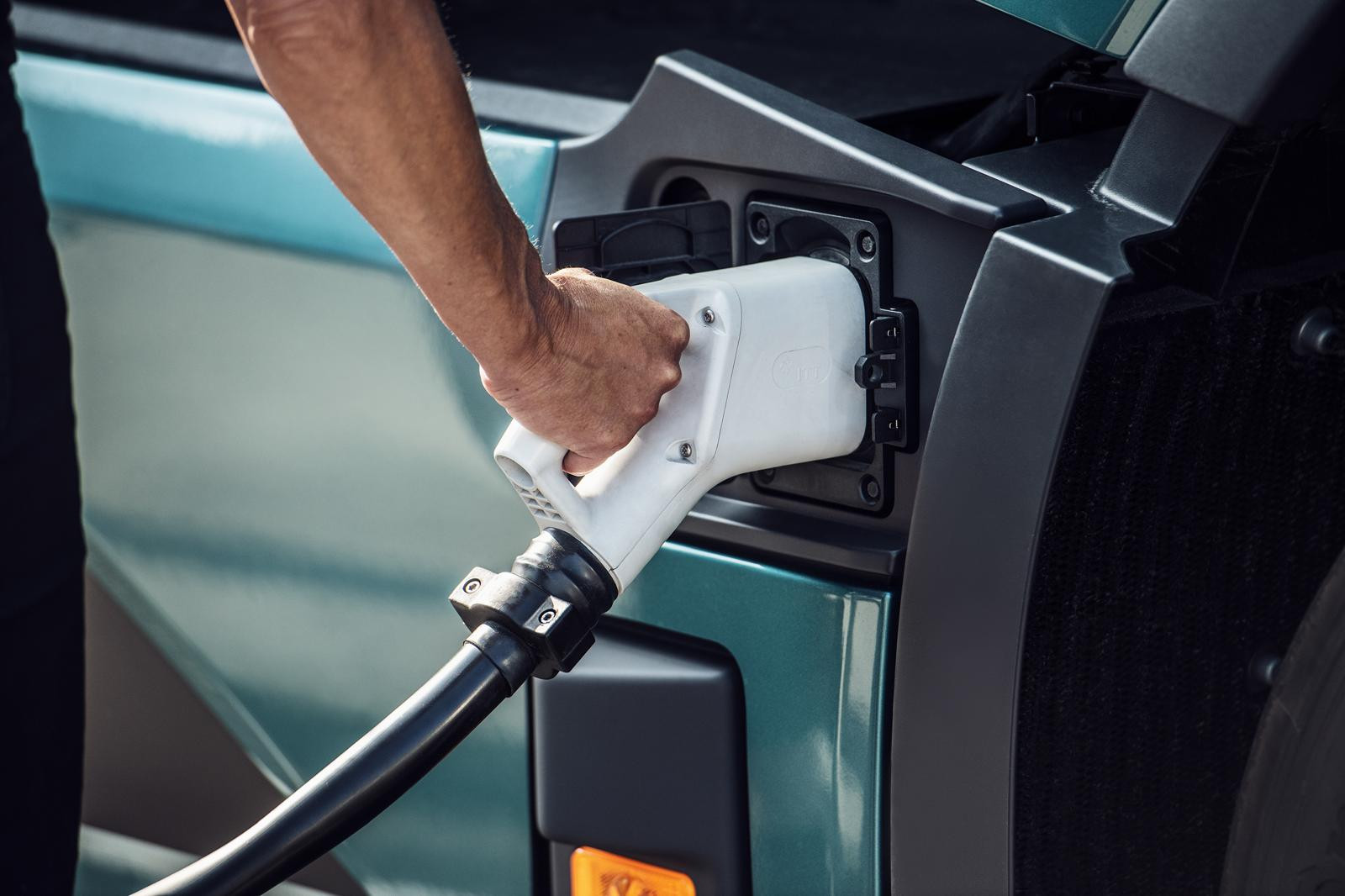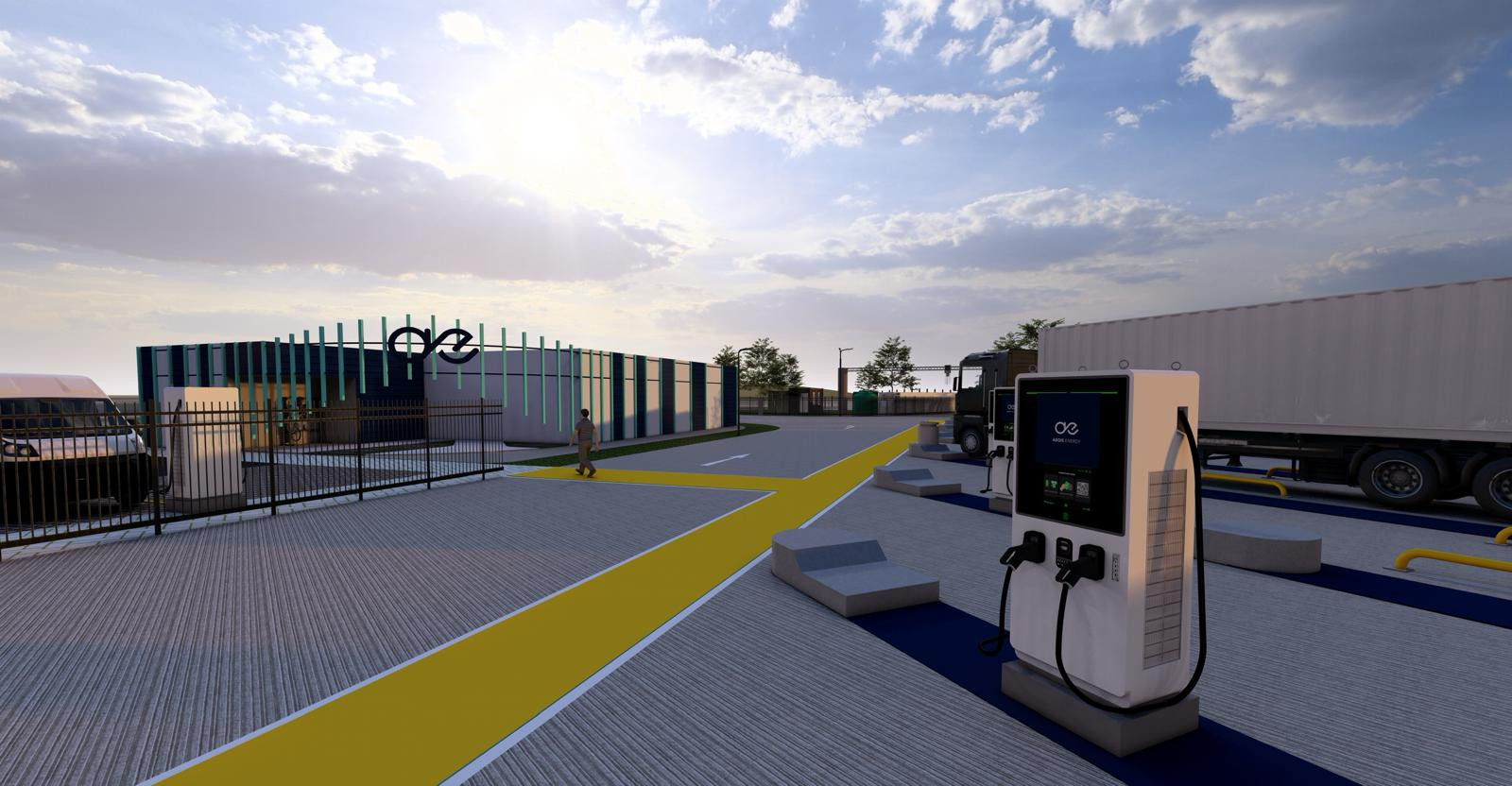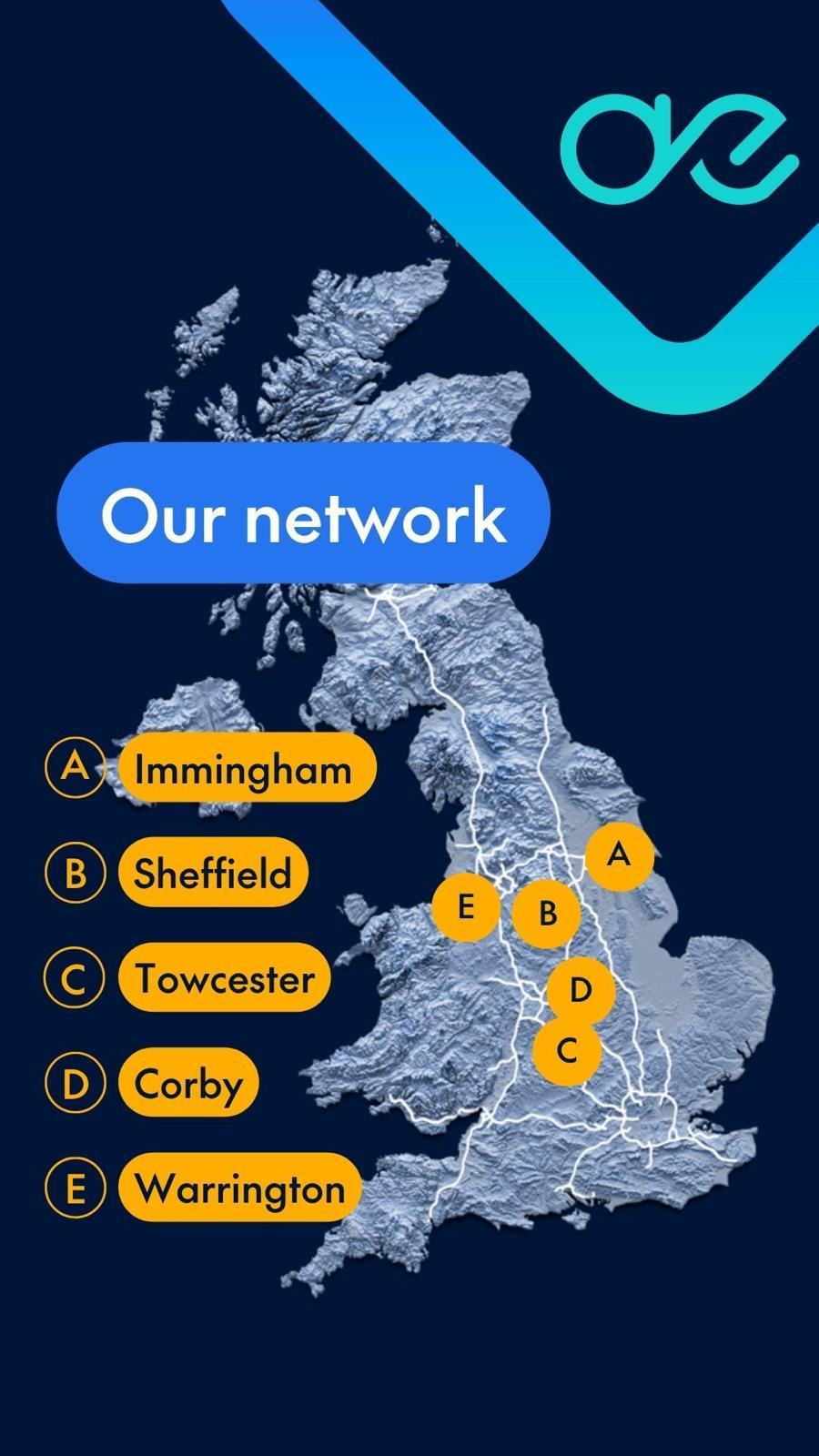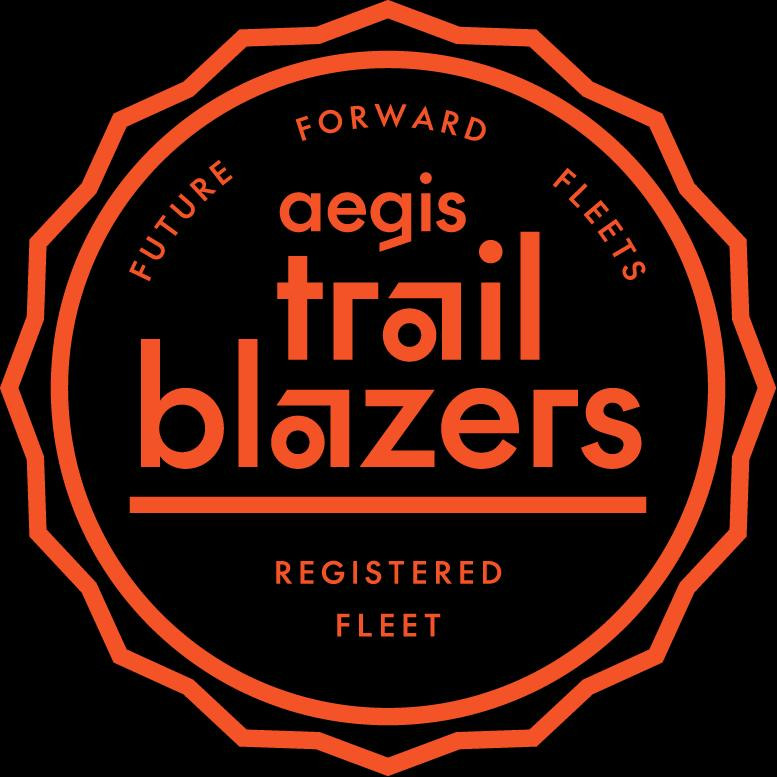Powering the transition: How Aegis Energy is building the UK’s CV refuelling network
By Luke Willetts - 5th August 2025

Aegis Energy HQ
UK – In a fast-shifting commercial vehicle (CV) landscape where net-zero targets and electrification timelines are no longer hypothetical but fast-approaching realities, UK-based energy startup Aegis Energy Ltd has emerged as a serious new player committed to building the infrastructure to support the industry's green transition. The company is looking to capitalise on the demand for clean energy in the transportation sector by preparing to roll out a nationwide network of energy hubs across the UK that will cater specifically to the needs of van and truck operators navigating the shift away from diesel.
Who is Aegis Energy?
Aegis Energy was founded in 2022 by a trio of industry and sustainability experts: Michael Shaw, Edmund Robins, and Christopher Thorneycroft-Smith. Together, they are able to offer a blend of major project, finance, and haulage industry-specific experience. Shaw and Robins offer firsthand experience in B-Corp certification, as well as engineering project management, finance and legal expertise. The third founder, Thorneycroft-Smith, is a commercial vehicle veteran drawing on decades of experience in the CV manufacturing and sales industry in the UK – positions held include CEO of IVECO UK Ltd and Head of Sales at DAF Trucks Ltd.
Setting the scene - Infrastructure and other barriers to zero-emission transportation
The transition to zero-emission heavy-duty vehicles in both the UK and Europe faces significant barriers, with infrastructure being the most critical, according to the European Automobile Manufacturers' Association (ACEA). It highlights the near-total absence of public charging, CNG, HVO or hydrogen refuelling stations suitable for electric or fuel-cell trucks across the continent, and notes even natural gas (CNG/LNG) availability remains patchy.
Furthermore, the World Economic Forum estimates the total infrastructure investment required at USD 50–60 billion, stressing that charging infrastructure and vehicle deployment must advance in parallel. Industry leaders in the truck industry, including Scania’s CEO, underscore the specific technical needs of trucks and warn that unless a dense, truck-compatible charging network is urgently developed, the cost and operational constraints will hinder the adoption of electric HGVs. Outright bans on combustion engines will not drive the change alone.
The UK itself faces a critical shortfall in HGV charging infrastructure, with just a handful of public-accessible electric truck charging points currently operational nationwide. According to a 2024 report by the Electric Vehicle Energy Taskforce, fewer than 10 public HGV-compatible chargers exist across the country. The National Grid’s Future Energy Scenarios warn that by 2030, more than 8,000 high-capacity chargers will be needed to support the growing number of electric trucks, yet the pace of deployment remains far behind target. This infrastructure gap is now seen as one of the biggest barriers to widespread electrification of the UK’s freight sector.

HGV truck charging points
Where Aegis Energy comes in
T&BB interviewed Chris Thorneycroft-Smith, who told us that Aegis Energy was formed officially three years ago and has been moving quickly ever since. The company currently employs 35 staff across offices in London and Wakefield and has, to date announced it has secured planning or development agreements on sites in five strategic locations, they are Sheffield, Immingham, Warrington, Corby, and Towcester. Set to be rolled out next year, these infrastructure hubs for HGVs will offer a mix of low-carbon and zero-emission energies, such as Hydrotreated Vegetable Oil (HVO), bio-compressed natural gas (bio-CNG) and electric charging (including the Megawatt Charging System (MCS).
Aegis Energy claims that each hub will have the capacity to charge/refuel approximately 40 HGVs and 25 vans simultaneously. This will be supported by sizeable grid connections. The first station is scheduled to open in early 2026. Ultimately, these will become part of a network of 50 energy hubs tailored for the UK’s freight and logistics network.
Aegis Energy claims that its first five hubs will have the capacity to charge/refuel both HGVs and vans simultaneously, and that customers can book in advance using its tried and tested user-friendly advanced booking system. For instance, the Sheffield site, set to open in 2026, has been designed initially to serve 30 HGVs and at least 80 vans simultaneously, with the designed capacity for the site to be further expanded four or five-fold as and when demand requires. Thorneycroft-Smith stated that the electric charging capability and future potential capacities of the Sheffield site is supported by the company having already secured sizeable grid connections; an important condition for development of any of its sites. Ultimately, these five sites will become part of a network of 50 energy hubs tailored for the UK’s freight and logistics network.
Thorneycroft-Smith added that Aegis Energy’s initiative to build a CV-dedicated network of refuelling and charging stations addresses the critical lack of infrastructure needed for commercial fleets to decarbonise, and that this investment by Aegis Energy aligns with UK government policies to reduce emissions and to help transition to sustainable transportation solutions.

Chris Thorneycroft-Smith, co-founder of Aegis Energy
Ownership and financial backing
The company is privately owned, with equity stakes held by the co-founders, alongside their principal financial backer, Quinbrook Infrastructure Partners, a major international investment firm focused on low-carbon energy infrastructure. Quinbrook committed up to GBP 100 million to Aegis at the end of 2024, a major vote of confidence that has helped accelerate the rollout of its first wave of projects.
Aegis Energy owns all of its sites outright to avoid leaseholds and to maximise long-term flexibility and return. The founders believe this ownership model gives them the operational freedom to adapt sites over time and ensure infrastructure evolves alongside technological developments and operator needs.

Aegis multi-energy refuelling station (rendering)
What specific services will Aegis Energy offer the UK CV sector?
Aegis Energy is building multi-fuel, low-carbon and zero-emission energy hubs that will primarily service commercial vehicles ranging from vans to heavy trucks. Each site will offer 400 kW DC fast charging for electric vehicles, with the ability to upgrade to 1 Megawatt charging, once OEMs and fleet demands require it. (The significance of Megawatt Charging Systems is the increase in simultaneous charging capacities). According to Thorneycroft-Smith, Siemens is the preferred partner of Aegis Energy for the supply and installation of electrical charging equipment, but it remains charging system supplier agnostic and emphasised that its focus remains on ensuring that the infrastructure installed at its hubs is carefully aligned with evolving OEM standards through direct consultation with truck and van manufacturers.
But the plan doesn’t stop at electricity. As mentioned earlier, each hub will also stock HVO, CNG + Bio-CNG, subject to there being sufficient customer demand, and in the future, hydrogen. Thorneycroft-Smith pointed out that every site has also been designed to eventually accommodate hydrogen fuelling, though he acknowledged that widespread hydrogen truck adoption is still likely to be years away. All electricity used will be sourced from the UK grid backed by certificates of renewable origin stated primarily as solar, wind and nuclear. The company also plans to top up its renewable source of electricity by sourcing directly from local solar and wind generators.
Where will the hubs be?
Aegis Energy’s first five hub locations have been confirmed. These sites fall into three strategic categories. Some are located adjacent to fleet depots, specifically to support operators that lack sufficient on-site charging capabilities. Others are positioned along key trunk routes and major logistics corridors, serving as convenient top-up locations for vehicles in transit. A third group of hubs will be situated at strategic transport nodes such as ports, rail freight terminals, and industrial estates, areas where commercial vehicle traffic is already high and predictable.
Each site will occupy between three and eight acres. Facilities will include fully segregated charging bays, with layouts carefully planned to ensure easy access, safe turning circles, and efficient traffic flow. This level of detail stems from ongoing consultation with drivers, fleet operators, and original equipment manufacturers (OEMs).

Map of the UK sites
Rollout timeline and cost
The first Aegis Energy site is scheduled to go live in early 2026, with two or three sites being fully operational by the end of 2026 and five in total by 2027. Future sites will roll out based on customer demand and logistics planning data gathered from fleet operators and manufacturers. The company claims to be the only multi-energy infrastructure provider in the UK and is therefore planning to develop a refuelling and charging infrastructure footprint unmatched by any competitor currently active in the UK.
Asked why there aren’t more companies developing charging and low-carbon refuelling infrastructure for commercial trucks and vans, Thorneycroft-Smith rolled off several reasons, including expertise, planning permission, and cost of development. The latter, he said, was not inconsequential, as connecting each site to the grid can cost between GBP 1.5 million and GBP 5 million, depending on proximity to power infrastructure and site layout. On top of that comes the cost of chargers, solar technology, security systems and driver amenities. The total investment required across all 50 hubs will exceed several hundred million pounds. As mentioned in January this year, it announced that it had secured funds of up to GBP100 million and that Aegis Energy, he said, is already planning a second round of funding to support the network’s full deployment.
What will these sites offer drivers?
Thorneycroft Smith highlighted the central importance of high-quality driver facilities, secure parking, clean showers, and a range of quality food and beverage services as critical elements of site design, directly linked to driver wellbeing and retention. Unlike conventional forecourts or truck stops, Aegis hubs will be designed from the ground up for CV users. They will include clean toilets, showers, driver lounges, fast-casual food options and fast Wi-Fi. There will be automated gate systems with ANPR (automatic number plate recognition), allowing vehicles to be directed immediately to the correct charger or fuelling bay, based on pre-booked appointments or dynamic load management with capacity also reserved for casual users.
Thorneycroft-Smith said that security is a priority. “Aegis has developed physical sensors and software in partnership with the University of Oxford and the insurance industry to monitor break-ins and tampering at depots and on parked vehicles, technology that will be integrated into site security systems.”
Ease of payments: Trailblazers scheme
At RTX 2025, Aegis Energy took to the industry stage to officially unveil its Trailblazers scheme, a loyalty and early-access programme designed to support and incentivise early adopters of its refuelling network. Announced during the three-day expo held from 24 to 26 June, the initiative offers benefits such as discounted electric charging and strategic decarbonisation support for fleet operators. In essence, the scheme operates as a loyalty fuel card programme for fleet operators, providing access to Aegis’s upcoming energy hubs. The first company to sign up was Wordsworth Excavations.

Trailblazers scheme
Energy supply and partnerships
While Siemens is a partner hardware supplier, Aegis Energy will inevitably select energy partners on a site-by-site basis, depending on local DNO (Distribution Network Operator) and solar and wind generation options and available grid capacity. Sites are all to include battery storage to manage peak loads and avoid surcharges.
Importantly, Aegis Energy plans to remain fuel-agnostic, recognising that the road to decarbonisation will not be the same for every fleet or every mission. HVO, bio-CNG (and CNG) will be critical interim solutions, particularly for operators without EV-ready fleets or those constrained by vehicle weight, range or cost concerns.
Who is Aegis working with?
Thorneycroft-Smith told us that the company is currently in active talks with all major truck and van OEMs, and has received strong support from fleet operators ranging from large third-party logistics providers to regional hauliers. While Aegis declined to name specific partners, they confirmed that feedback from logistics firms and OEMs has significantly shaped the hub designs and charging strategies.
The bigger picture
Aegis Energy’s approach is scalable and, above all, grounded in deep industry knowledge. According to Thorneycroft-Smith, most infrastructure players have taken a retail-centric view of EV charging, whilst Aegis Energy is tackling the problem from the operator’s side, designing facilities that solve real problems for real fleets.
With a major backer, an experienced leadership team, and five hubs moving toward launch, Aegis Energy is positioning itself as a cornerstone of the UK's zero-emission freight future. The infrastructure they’re building won’t just serve electric trucks and vans, it will make them viable, reliable, and competitive in an industry where timing and reliability are everything, which might make all the difference.



